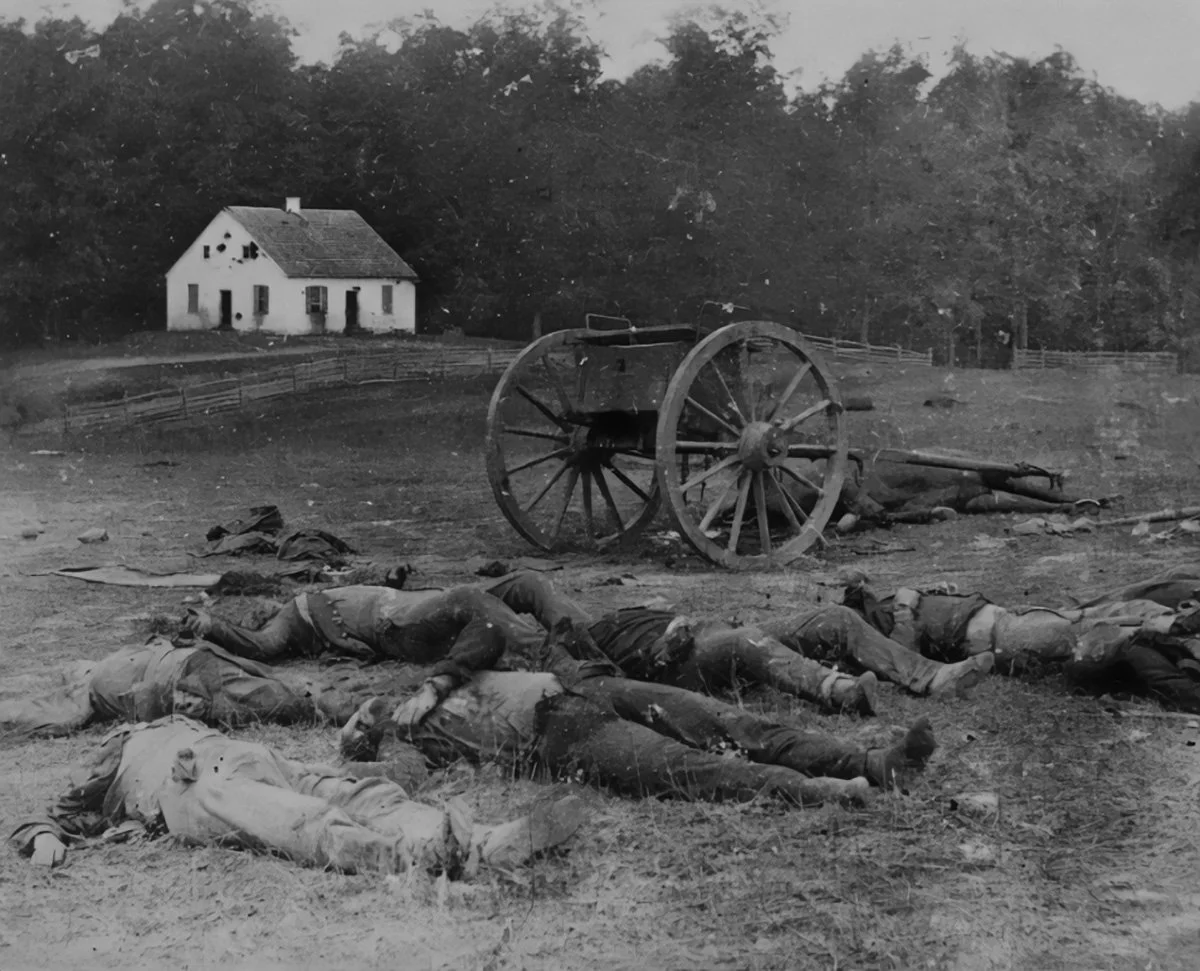Book Review: I Dread the Thought of the Place
I Dread the Thought of the Place: The Battle of Antietam and the End of the Maryland Campaign by D. Scott Hartwig (2023)
Johns Hopkins University Press
Review by Jeffrey R. Biggs (Hardtack Books)
“ Hartwig has provided an invaluable service to the Civil War community and American history by creating the most comprehensive and exhaustive work on the campaign, which marked a turning point - but not the turning point as the author states - of the conflict from one of limited war to a battle for the future of slavery in the United States.”
Bodies of Confederate artillerymen near Dunker Church (LC)
This is the second volume on the 1862 Antietam Campaign, which begins in the early dawn hours of September 17 at the onset of the battle and ends with Lee’s Army of Northern Virginia “pushed to the limit of its endurance” and Army of the Potomac assuming a defensive posture on the Union side of the Potomac, D. Scott Hartwig finishes his excellent two-volume history of the Antietam Campaign. Hartwig has provided an invaluable service to the Civil War community and American history by creating the most comprehensive and exhaustive work on the campaign, which marked a turning point - but not the turning point as the author states - of the conflict from one of limited war to a battle for the future of slavery in the United States.
For those who haven't read the first volume of Hartwig's history, entitled "To Antietam Creek," the second volume provides a well-written prologue summarizing critical points for readers to follow the narrative. The battle narrative itself is predictable enough, with Hartwig tackling each of the separate phases of the conflict in chronological order. The book contains dozens of beautifully rendered maps showing incremental changes in troop positions, typically over fifteen to thirty-minute intervals. Hartwig describes the events of Hooker’s morning attack, followed by Hood's counterattack and the subsequent 12th Corps sweep of the Cornfield. The book covers the late morning attacks in the West Woods, the 2nd Corps assault on the Sunken Road, Burnside’s attack on the Rohrbach Bridge (later referred to as “Burnside’s Bridge”), and A.P. Hill’s famous march and late-day counterattack in detail. Hartwig's account of the battle includes post-battle chapters on the aftermath of the field, the civilians of Sharpsburg, McClellan’s lack of pursuit of the damaged Confederate army, and how Lincoln turned a tactical draw into a strategic victory with the Emancipation Proclamation.
Hartwig tends to rely more heavily on eyewitness correspondence, such as those collected by the early battlefield historians Ezra Carman and John M Gould, and newspaper accounts than the traditional accounts found in the Official Records. There seems to be a deliberate effort here to let the individuals who fought the battle tell the story and not so much the commanders who directed them.
In a departure from other accounts of this campaign, in his account of the battle, Hartwig offers a thorough analysis that avoids any overtly partisan stance towards individual commanders. George McClellan, in the view of the author, “had a right to be sensitive and proud of the Federal army’s achievements, as well as his own accomplishments” (p 755). General McClellan brought order back to an army that had been defeated and left feeling disheartened. He then led them on a triumphant march, culminating in victories over General Lee's forces at South Mountain and Antietam. These triumphs were pivotal in forcing the Confederates to retreat to Virginia. McClellan’s main shortcoming was his reluctance to access the abundance of military intelligence he had. The general’s staff seemed more interested in reinforcing the narrative that McClellan was outnumbered in Maryland than seeking more reliable information, which would prove he was not. Both commanders on the field expectations of their men were not aligned with reality; Robert E. Lee demanded too much from his men, while McClellan expected too little.
Hartwig presents a highly detailed, meticulous account of the Battle of Antietam that has left an indelible mark on history; however, what sets this work apart from many others is its unique ability to delve deeper into the complexities of the aftermath of the battle, such as the emotional turmoil that ensued and the consequential impact on the civilians. Furthermore, the book also sheds light on the critical role that the battle played in ending slavery in the United States. I trust all readers of American history will find space on their bookshelves for this work.
